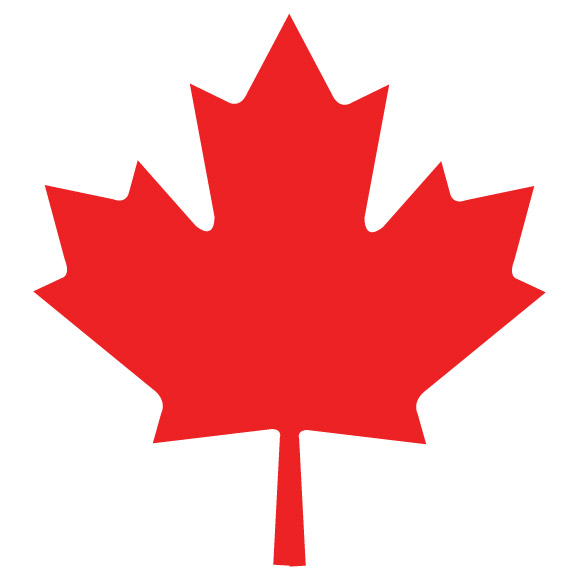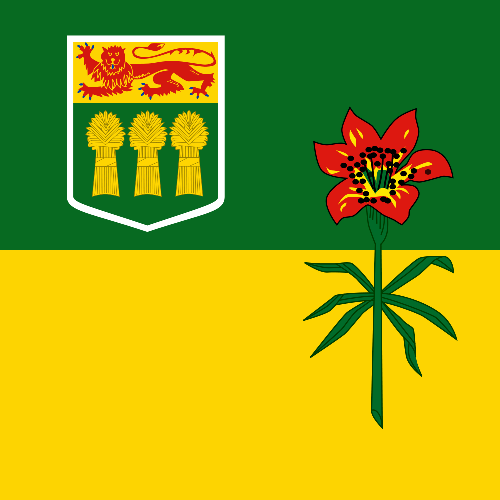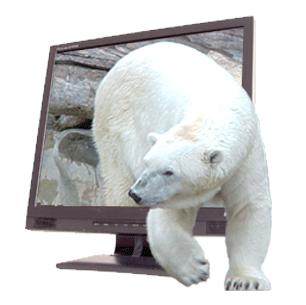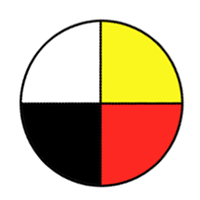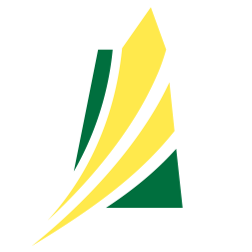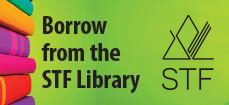R105323
During this Broadcast, students will explore the complex world of AI deep fakes. Through collaborative learning and interactive activities, they'll explore the technology behind deep fakes, understanding how artificial intelligence can be used to create highly convincing but fabricated content. Additionally, students will critically examine the ethical implications of deep fakes, while exploring real-world examples of its usage and impact. The session will last 45 minutes, providing a comprehensive learning experience for all participants.
Record posted/updated:
May 29, 2025
R054783
This video explains decomposition, one of nature's most important processes. For two months in the summer of 2011, a glass box containing food laid out from a typical kitchen and garden for a family of four was left to rot in full public view within Edinburgh Zoo. In this resulting documentary, presenter Dr. George McGavin and his team use time-lapse cameras and 3-D photography to capture the way in which moulds, microbes and insects are able to break down our everyday things and allow new life to emerge from old. The film reveals the incredible science of taphonomy, discovering what happens to organic matter as it starts to decompose. Whole new ecosystems of life invade, each more complex than you would ever expect. The micro-organisms involved in turning milk sour, lactobacillus, are highlighted; in addition to pseudomonas, micro-organisms that make meat smell; and botrytis cinerea, those that make fruit and vegetables go velvety grey.
Microbiology gives us insight into the part played by bacteria, yeasts and fungi. Biochemistry reveals how the chemical processes in living organisms cause change. Entymology reveals the vital role of insects in the great cycle of decay. The video also explores the incredible science behind preservation, from new food packaging and chemical additives to UV radiation and osmotic pressures.
Record posted/updated:
July 8, 2024
R052846
Although humans have travelled all the way to the moon and back, the bottom of the sea remains largely unexplored. Now some Canadian scientists are doing something about that by placing sensors and cameras on the seabed off Vancouver Island. This story looks at the NEPTUNE Canada project.
Record posted/updated:
November 28, 2018
R105333
In this broadcast, students will delve into the careers of the future, using the Sustainable Development Goals as a guiding framework to pinpoint current global challenges. They will contemplate potential emerging technologies capable of addressing these challenges and craft job titles that encompass the requisite skills for success in these yet-to-be-realized professions. The session will last 45 minutes, providing a comprehensive learning experience for all participants.
Record posted/updated:
May 29, 2025
R051856
This video explores the smallest, most important units of life - cells. Using animation, cell parts and different types of cells, including prokaryotic and eukaryotic cells, are illustrated. Energy conversion and reproduction are also explored.
Record posted/updated:
November 28, 2018
R071660
In Cells: The Building Blocks of Life, viewers receive an introduction to modern cell theory. This program presents and illustrates various terms related to cell structure and function including the nucleus, ribosomes, mitochondria, the Golgi complex, and lysosomes. Cell division is discussed briefly.
Record posted/updated:
November 28, 2018
R054654
Humans, wildlife, water and land formations are all part of a watershed. Vital needs are served by watersheds, such as water, drinking water, places to live, wildlife habitat, agriculture, industry, hydroelectricity and recreation. This Canadian map highlights 594 watersheds that eventually flow to the ocean watersheds. The poster includes websites for further research and suggestions for how to become involved in stewardship of your local watershed.
The poster was distributed to all K-8 schools in January 2009. The poster is still available for ordering by members of the Canadian Wildlife Federation.
Other
Free to CWF members
Record posted/updated:
July 8, 2024
R047220
The video series may be used to address outcomes at different grade levels. Rather than showing the program in its entirety, teachers are encouraged to select segments for viewing that directly relate to specific unit outcomes.
Please see the related resources below.
Record posted/updated:
November 28, 2018
R054785
In this program, David Attenborough journeys to both polar regions to investigate what rising temperatures will mean for the people and wildlife that live there and for the rest of the planet. Sir David starts out at the North Pole, standing on sea ice several meters thick, but which scientists predict could be open-ocean within the next few decades. The Arctic has been warming at twice the global average so Sir David heads out with a Norwegian team to see what this means for polar bears. He comes face to face with a tranquilized female and discovers that mothers and cubs are going hungry as the sea ice on which they hunt disappears. In Canada, Inuit hunters have seen with their own eyes what scientists have seen from space - the Arctic Ocean has lost 30% of its summer ice cover over the last 30 years. For some, the melting sea ice will allow access to trillions of dollar worth of oil, gas and minerals. For the rest of us, it means the planet will get warmer as sea ice is important to reflect back the sun's energy. Next Sir David travels to see what's happening to the ice on land: in Greenland, we follow intrepid ice scientists as they study giant waterfalls of meltwater, which are accelerating iceberg calving events, and ultimately leading to a rise in global sea level.
Temperatures have also risen in the Antarctic and Sir David returns to glaciers photographed by the Shackleton expedition and reveals a dramatic retreat over the past century. It's not just the ice that is changing - ice-loving adelie penguins are disappearing, and more temperate gentoo penguins are moving in. Finally, we see the first ever images of the largest recent natural event on our planet - the break up of the Wilkins Ice Shelf, an ice sheet the size of Jamaica, which shattered into hundreds of icebergs in 2009.
Record posted/updated:
July 8, 2024
R045866
This series of video programs examines the future of medicine.
Please see the related resources below.
CD/DVD
Contact the distributor for pricing information.
Record posted/updated:
November 28, 2018
R054578
This video series introduces students to the history of our continent. Using a range of techniques from 3-D animations to filming from a helicopter, the changes in Canada's geology are uncovered.
A teacher's guide is available.
Please see the related resources below.
Record posted/updated:
July 8, 2024
R101038
Gizmos is a website of inquiry-based, online simulations for topics in Math and Science from Grades 3-12. A selection of simulations is available as part of the free trial, but access to the full library of simulations requires a paid subscription. A request must be submitted by email to receive a quote for a membership. Examples of the topics in the library include: ecosystems, chemical bonding and genetics.
Record posted/updated:
September 1, 2020
R071717
This SEPUP module uses guided inquiry to explore the issue of groundwater contamination. Students are presented with a description of the town of Fruitvale and its water problem. Through investigation, simulation, and modelling, they learn about groundwater, the water cycle and the process of groundwater contamination. Students determine the cause of the problem and consider clean-up options by participating in a role play. This teaching module may be purchased separately or as part of a kit that includes the required materials for investigation.
Please see the related resources below.
Record posted/updated:
November 28, 2018
R049477
Could Dublin's climate ever resemble that of Spitzberg in the Arctic Ocean or could London one day be as cold as Siberia? Is there an "Achilles' Heel" in Europe's climate? Would we face a catastrophe if the warm, strong currents of the Gulf Stream stopped flowing? Gulf Stream and the Next Ice Age is an odyssey that takes us from Europe to America in search of an answer to these questions. In France, Scotland and Norway, we take a look at how Europe's coastal population depends on the Gulf Stream. Through the use of computerized animation and explanations from specialists from Columbia University's French Polar Research Centre in the Greenland Sea, we get a clear understanding of what would happen if the Gulf Stream ceased to influence the climate in Northern Europe.
Record posted/updated:
December 26, 2018
R071720
The purpose of this resource is to raise educators' awareness and understanding of water quality topics and issues. It seeks to clarify the relationship between water quality and personal, public, and environmental health. This resource was developed by International Project WET.
Record posted/updated:
November 28, 2018
R071676
Photographer Dennis Kunkel uses powerful microscopes to reveal the hidden beauty of everyday objects: a crystal of sugar, a grain of pollen, a mosquito's foot and the delicate hairs on a blade of grass. Students will learn how Kunkel became interested in microscopes, how he prepares specimens for study and how different microscopes work. The photographs provide a look at the work of a microscopist and the world he explores.
Record posted/updated:
November 28, 2018
R041434
Written by two high school science teachers, this resource contains practical techniques to promote students' comprehension of science concepts through writing. Focus is placed on creative expression to deepen understanding of scientific concepts, rather than on memorization of facts and formulas. Topics include lab report writing, open-ended and critical thinking exercises, student research papers, managing the paperwork and portfolio assessment.
Record posted/updated:
March 7, 2017
R047227
This video series focuses on the human body from cells to systems, including the reproductive and endocrine systems. Each DVD features real-world experiences, along with microphotography and graphics. Every program includes an easy-to-replicate, hands-on activity and an interview with an expert in a particular area of science.
Teacher's guides are included and feature additional information on the topic, vocabulary words, discussion questions, follow-up activities and lists of recommended books and Internet resources. The teacher's guides are available online at www.distributionaccess.com.
Please see the related resources below.
Record posted/updated:
July 8, 2024
R052623
Using high definition video footage, animated maps and graphics, "Let's Talk Geography: 55 Geographical Terms (Every Kid Should Know)" provides students with a fun and visual way to learn about landforms, bodies of water and places all over the world. This program takes viewers around the world to show different kinds of mountains and valleys and shows how they're formed. The program talks about climates and shows and discusses the differences between deserts, the polar regions, forests and grasslands. This live-action program combines photography, animated maps and graphics to help viewers learn, recognize and identify 55 geographical formations, landforms and bodies of water.
Record posted/updated:
August 27, 2020
R105354
Join us for a unique opportunity, where a Let’s Talk Science education specialist will guide you and your class in a co-learning experience. During this 45-minute session, you’ll learn easy-to-implement strategies around Digital Literacy and the Sustainable Development Goals. At the same time, students will contemplate potential emerging technologies that address future challenges and craft job titles encompassing the requisite skills for success.
Record posted/updated:
May 29, 2025
R071719
These video programs address the relationship between science and technology, and social and environmental contexts (STSEs). The history of light is interwoven with current research and technologies related to light, as well as future considerations and implications.
Please see the related resources below.
Record posted/updated:
November 28, 2018
R071653
The program follows the North Saskatchewan River from its source in the Columbia Ice Field to an area just east of Prince Albert, where it joins with the South Saskatchewan River. The environmental, economic, social and historical influences that the river has had on the land and people are examined.
Record posted/updated:
November 23, 2021
R011314
This video series examines an urban wetland. Jesse and Seka pursue a science project on biodiversity. They decide to survey the life in a cattail marsh to build a case to preserve the wetland. Through each episode in the series, Jesse and Seka learn about the species in the wetland, how to take data to substantiate their claims, how to classify the various species, how the various species adapt to live in the wetland and present their findings to city councillors and the land owner.
Please see the related resources below.
Record posted/updated:
July 2, 2020
R103288
This Perimeter Institute kit uses student activities to highlight the creative, inquisitive, communicative and collaborative aspects of the scientific process. Perimeter Institute kits are available free of charge; this kit includes a teacher's guide, 8 photo cards, a DVD with short videos that support the activities and a CD-ROM with editable versions of the students worksheets found in the guide.
Record posted/updated:
November 25, 2018
R071724
The Project WET Curriculum and Activity Guide, a companion to Project WILD, is a collection of water-related lessons and mini-units. The activities incorporate a variety of formats including whole class activities, large and small group learning, co-operative learning, laboratory investigations, local and global topics and involvement in community service projects. Peoples' relationships to water are a major theme of Project WET. Other activities include water's chemical and physical properties, quantity and quality issues, aquatic wildlife, wetlands, ecosystems and management strategies. The activities promote critical thinking and problem-solving skills and help provide young people with the knowledge and experience to make decisions regarding water resource use. Teachers are encouraged to select activities from this resource that align with curriculum outcomes and that meet the needs of students.
The Project WET Curriculum and Activity Guide is only available through Project WET workshops. These six-hour workshops include an opportunity to experience the activities and to plan how to use them in the classroom. A Saskatchewan background supplement will be provided to educators in addition to the activity guide. A modest registration fee will cover workshop materials and expenses.
Record posted/updated:
July 8, 2024
R045748
The lower Churchill River has undergone many environmental changes that have had an impact on the residents of Churchill. The author interviews individuals from Churchill to gain insight on the changes of the Churchill River. The interviewees also provide recommendations to improve usage of the lower Churchill River.
Record posted/updated:
November 28, 2018
R071723
This video program looks at the influence of rivers in shaping landscapes. Examples are provided from various rivers including the Amazon, Mississippi, Nile, Rhine, Ganges and Mekong. Many concepts related to water systems are introduced including drainage basins and networks, watersheds, higher and lower order streams and the fluvial processes of erosion, transportation and deposition.
Record posted/updated:
November 28, 2018
R071687
This safety resource brings information together that is needed by administrators, planners, teachers and support staff to help them make sound decisions regarding science safety. It supports planning and action by providing information on safety legislation, standards and concerns, as well as example procedures for eliminating or minimizing hazards. A copy of this handbook was sent to all schools with Grades 8-12. Because workplace standards may change over time, users of this resource should check for updated information wherever there are references to national or provincial legislation.
Record posted/updated:
January 2, 2019
R071689
This video program highlights the role of satellites in communication and observation. A range of applications for satellite technology are explored in the areas of weather and climate change, agriculture, pollution and deforestation. This program shows the interconnections between science and technology and clarifies how we come to know and understand various scientific concepts.
Record posted/updated:
November 28, 2018
R071690
This professional resource shows how science notebooks can be used with inquiry to extend students' understanding of scientific concepts. It describes the components of a science notebook and outlines the role of the teacher in implementing, developing and assessing science notebooks. This resource helps to establish links among science content, the process of inquiry and the role of literacy.
Record posted/updated:
June 22, 2018
R048062
Science for English Language Learners is designed to assist teachers to implement inquiry-based science while increasing learning opportunities for English Language Learners (ELL). The book provides strategies for planning, teaching, assessing and extending learning. While the book is specifically designed for ELL students, many of the strategies can benefit all students in the classroom. Included in the book are lesson plans which include standards and objectives, background, materials, activities and a summary. Depending upon the grade level, charts and diagrams are also included in the lesson plan. The lesson plans provided will need to be adapted to address the Saskatchewan science curriculum outcomes.
The authors also provide educators with a sense of how it will look when strategies are incorporated for teaching English Language Learners in the classroom. If an educator is unfamiliar with English Language Learners, this book provides strategies for working with ELL students, how a second language is learned and connecting with families. Strategies to incorporate into daily teaching are discussed and while this is a science-related book, these strategies could be implemented in any area of teaching.
Record posted/updated:
July 8, 2024
R101663
This series of eight videos presents the personal stories of 17 Saskatchewan residents who served during the World War II.
Please see the related resources below.
Record posted/updated:
August 24, 2021
R071695
This resource contains 50 interdisciplinary hands-on learning activities that promote critical thinking about sustaining ecosystems, living sustainably and examining values related to environmental issues.
Record posted/updated:
August 29, 2019
R020951
This exploration of Saskatchewan's ecoregions and ecozones emphasizes the relationship between the environment and its inhabitants. The book provides a description of the physical setting and biological features of each ecozone including information on climate, landforms and soils, groundwater, vegetation and wildlife. Black-and-white photographs, line drawings, tables, charts and maps illustrate the resource. A glossary is included.
Record posted/updated:
November 28, 2018
R071703
This resource looks at the biodiversity found in Saskatchewan's Great Sand Hills and at the pressures for development of the natural gas resources in this region.
Record posted/updated:
November 28, 2018
R048004
The authors examine the use of water as a source of power. A brief history of water as a source of power is highlighted. The authors describe what is needed to generate electrical energy using water power. The authors include brief points as pros and cons for water power. An example includes the building of dams and how they impact the land. The authors also include case studies about water power.
The book includes a table of contents, a glossary, suggestions for further information, and an index.
Record posted/updated:
July 8, 2024
R045237
The gradual warming of our planet - an amount 1-4 degrees - is causing our glaciers and ice caps to melt at an unprecedented rate. This video explores the function of our glaciers and provides a regional, national and international picture of fresh water supplies. Interviews with many of the world's specialists on water, including activists, scientists and writers are interspersed with footage from deep within crevasses and high above ice fields. They all agree that the world is facing a crisis on the issue of fresh water scarcity. As fresh water availability declines and water supplies are privatized, water may be unavailable to 2/3 of the world's population. This video brings to the viewer's attention how this issue will certainly impact each of us, how vital it is to protect our fresh water supplies now and how Canada can take a leading role as the country with the greatest wealth of fresh water on earth.
Record posted/updated:
November 28, 2018
R071696
This resource covers many topics in the renewed science curriculum. Using the ancient Greek division of the world using spheres, the authors examine the atmosphere (air), pedosphere (land), biosphere (living), hydrosphere (water), cryosphere (frozen) and geosphere (subterranean). The animals, plants and landforms that exist within each sphere are described. Photographs illustrate to readers the diversity of life within the sphere. The book includes a table of contents and an index.
Record posted/updated:
November 28, 2018
R071697
Slavin shows the process of how objects are changed from raw materials to the finished products. He uses common items that students are familiar with, such as baseballs. Each two-page spread describes how the object is made by breaking the process down into steps. Illustrations complement the text and show the technology behind the science. Slavin demonstrates the connection between science and technology in making objects. The book includes a table of contents, a glossary, suggestions for further research and an index.
Record posted/updated:
January 16, 2025
R071728
This DVD demonstrates water quality testing using water from four different sources: a pond, a drinking fountain, an aquarium and a swimming pool. It examines factors such as temperature, dissolved oxygen, pH level, alkalinity, hardness, nitrates, coliform bacteria and chlorine.
A teacher's guide is available online at www.visualed.com.
Record posted/updated:
July 8, 2024
R039544
This field guide presents identification keys, descriptive information and colour photographs of water and wetland plants in Saskatchewan, Alberta, Manitoba and the northern United States. It provides a relevant, easy-to-use guide for field trips to wetland ecosystems.
Record posted/updated:
November 28, 2018
R071727
This resource provides an overview of watershed science. It includes information and activities related to the biological, chemical and physical properties of rivers and streams and the way they are impacted by surrounding land uses. Models, simulations and steps to researching and analyzing water quality and land use are suggested.
Record posted/updated:
November 28, 2018








